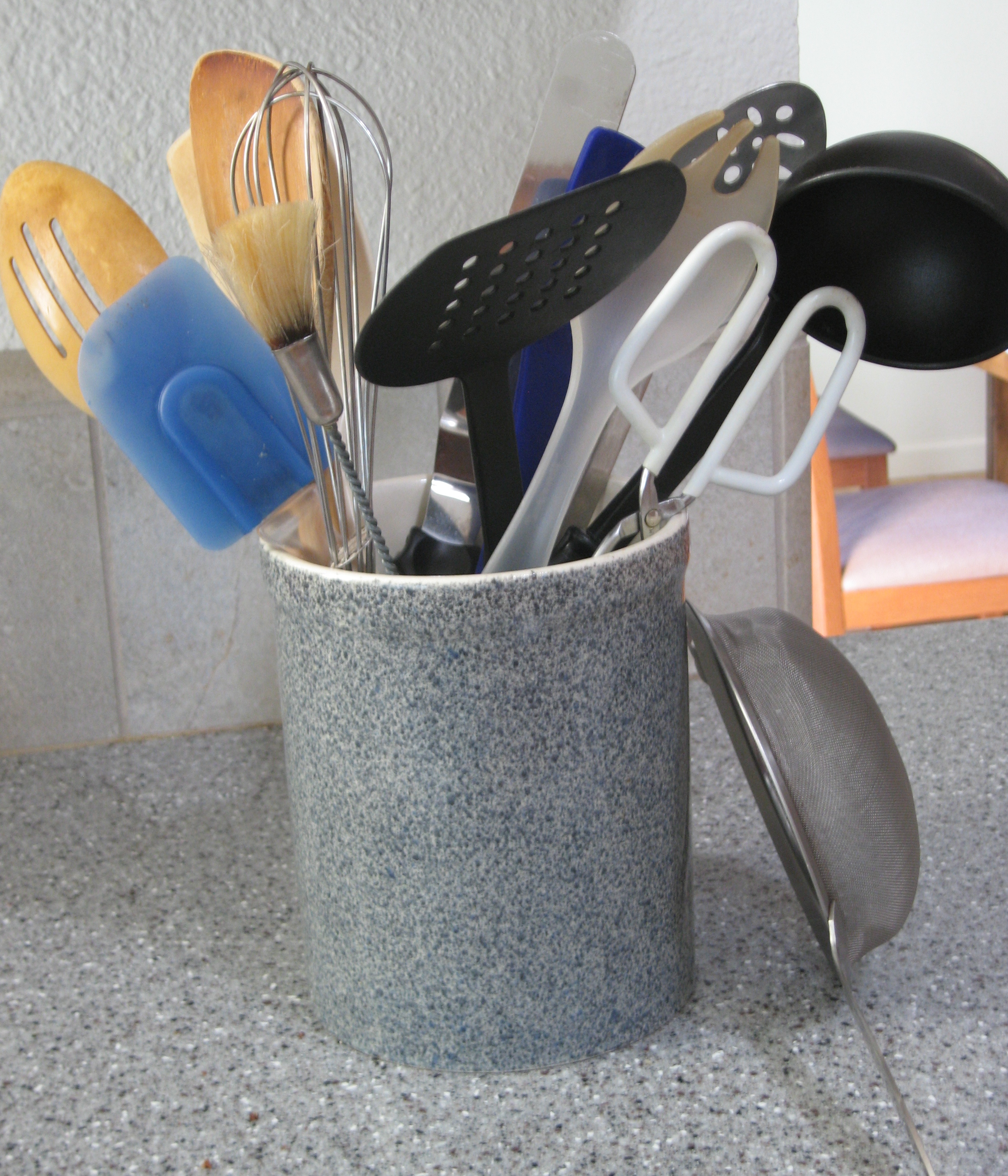 The most common excuses I hear for not eating healthier are: “I don’t have time”, “I don’t like cooking”, and “I’m an awful cook”. These are the excuses of modern life.
The most common excuses I hear for not eating healthier are: “I don’t have time”, “I don’t like cooking”, and “I’m an awful cook”. These are the excuses of modern life.
We are so busy rushing from here to there that time has become a precious commodity. Additionally, our taste buds, conditioned to prefer heavily sugared and processed foods, are unaccustomed to the natural flavors of real whole foods. This perpetuates the fear that healthy cooking wont taste good. Compounded with the fact that most of us were raised on convenience foods and not taught basic cooking skills as children, cooking has become a foreign experience instead of second nature.
As a result, one of the biggest obstacles to eating healthy is cooking. The perception that cooking is a burden and a chore has become an epidemic. Cooking requires you to stop and focus on your physical needs and be creative as you combine flavors and textures to produce tasty combinations. Our society places more value on the immediate gratification of food fulfillment, overlooking not only the health benefits of cooking your own meals, but the pleasure that can be found in taking the time to prepare and share a healthy delicious meal.
It is important to remember that healthy cooking does not have to be complicated or extravagant with the use of unusual ingredients. It can be as simple as a fresh garden salad topped with sprouts and a drizzle of basil vinaigrette, a steaming pot of vegan lentil soup, or a plate of oven roasted veggies with tofu over quinoa. Cooking healthy is about mindfulness and being open to change.
I wish there was an easy self-help guide that could instantly move you from inexperienced novice to plant-based chef overnight. But the truth is, it takes commitment, patience, trial and error, and repetition in order to change old habits into new healthier ones. Although I lack the magic wand, here are some suggestions that might help ease your transition:
The best way to start is to just start:
- Make the commitment to create a healthier lifestyle: It takes conscious choice to change ingrained habits. Once you have made the decision to do things differently, it’s just one foot in front of the other. With commitment and patience you can create healthy meals and begin experiencing the healing properties of food.
Focus on the intent and outcome; a healthier and more active life. Making healthy choices is not about denying yourself the foods you love; it’s about providing the best for yourself and those you love.
Make your kitchen an inviting place to spend time. Clean out your pantry, reorganize your cabinets, tape pictures of loved ones or motivational sayings on your fridge in order to create a positive environment.
- Change your choices: It’s hard not eating your favorite unhealthy foods when they are staring you in the face everyday. Clean out your pantry. Transition to healthier alternatives by replacing the processed foods with healthier options.
For example, instead of ice cream, try frozen fruit sorbet. Better yet, stock your freezer with fresh frozen fruit and when the urge for ice cream hits, put a cup of frozen fruit in the blender with a splash of nondairy milk and a tablespoon of agave nectar or try our recipe for vegan peach sorbet.
- Create new routines: In order to change old habits you need to create new routines. Think about how you make decisions on what foods you eat and when. Are you a “grab and go eater”, choosing easy, convenient, and quick options? Or an “emotional eater” that reaches for foods that will satisfy your moods? Or a “frequent muncher” that likes to have food close at hand, snacking throughout the day? Maybe you’re a combination or something all together different. It doesn’t matter what your eating style is. To change a habit, you need to first recognize how you make your food choices and then begin to change that behavior.
The “grab and go eater” might want to cook meals ahead of time or double a recipe in order to have left overs for another day so meal time is a quick reheat. The “emotional eater” may want to consider finding healthy substitutions for their favorite foods. Experiment with our substitution guide when cooking or begin searching for new comfort foods by trying out new recipes. The “frequent muncher” will want to make sure healthy choices are always on hand, filling his/her pantry with healthy snacks like nuts, seeds, whole food crackers, almond butter, etc.
- Plan ahead: Set aside one day a week (before you go grocery shopping) to plan your meals for the following week. You can either designate a meal for each day or simply decide on specific meals you’d like to eat and then each day choose which one you will create. Make a shopping list based on your meal plan, and then buy those ingredients so they are on hand.
- Set aside time for cooking: Learning a new skill takes unpressured time. Set aside one day a week where dinner preparations aren’t rushed so you can practice cooking something new. Also, if you know you’re up for a busy week, save Sunday afternoon as a time to do some prep cooking. If I have a Sunday afternoon free, I’ll cook up a pot of lentils or chili to have later in the week. It takes pressure off when a main course is already prepared and just needs to be reheated. Add a salad and sauté some veggies and you’re done.
- Develop a repertoire of quick healthy dinners: Cooking healthy doesn’t have to take a lot of time. Discover quick and easy recipes. Vegetable stir-fries over rice or quinoa is a mainstay in our house on evenings when time is of short supply.
- Make time to find new recipes: check out our website. We are always adding new recipes. Here are some other great websites we enjoy using: Oh She Glows, Detoxinista, The Gluten Free Vegan, Vegkitchen.
- Make cooking fun! Make room for joy in the kitchen. Playing music, smiling, singing, or dancing while cooking will change the experience from burden to fun. Allow yourself the freedom to experiment and remember – as you develop your new routines and skills you’ll begin to look and feel better.

Hi I am a student and looking for ideas to improve my diet I douns your post very helpful.
A friend of mine was totally frustrated after an afternoon of shopping for ingredients for a vegan meal. She related her experience and the expense of the ordeal. I realized then that veganistas shop in different parts of a grocery store. I would bet many of us include a store that includes buying in bulk, where small amounts to flours, grains, legumes, and spices may be bought, thus, spending much less money, especially if we’re just getting our feet wet, so to speak. Do you have any hints in the seeking and shopping for the week?
Thanks for the comment! It can be frustrating shopping vegan as it seems that the healthy foods are more expensive. Shopping at stores that provide bulk purchases (such as Whole Foods or a local Community Market) is a great way to purchase just the right amount of what you need. And shopping at warehouse stores like Costco where you can now buy organic foods in large sizes are great way to purchase those items you use a lot. We do have plans to write a future blog on how to shop vegan on a budget so keep checking back.